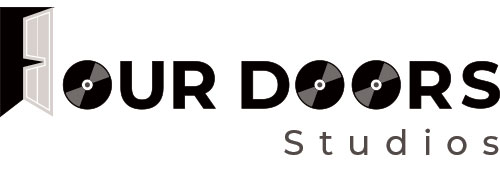As someone who runs a recording studio, I have often been asked how to get the best vocal recording. My number one answer is always the same, “be well rehearsed”. To get a great take in the studio practice is the most important part of the puzzle. For example, if you come in to the studio and are reading the lyrics of a piece of paper or your phone then you will not get as good a take as the one where you can remember the lyrics by heart. Remembering all the words gives the artist more confidence while recording and thus a better take is made. The more practiced you are, the better you will be able to record all those wonderful nuances in the vocal melody and phrasing too!
Some other good advice is:
– Be warmed up before you get into the studio so you don’t waste time on the first couple of takes while trying to get warm.
– Maintain the same and correct distance from the mic will ensure your engineer gets the vocals down effectively with good input levels and you will not have as many plosives to edit out later.
With recording vocals in mind, we have put together a vocal lesson for you to try and practice at home and/or on the way to the studio.
See below:
Vocal Lesson Guide
- WARM UP
- Mouth closed. Mmmmmm
- Lip trills
- Sliding rrr’s in the same pattern as lip trills
- Falsetto – nah nah nah nah nah
- Siren sound lip trills
- Enunciation – Sh Sh, S, S, Th Th, F, F
- BREATHING EXERCISES
A)
- Inhale deeply through the nose while slowly counting to three.
- Hold the top of the inhale while slowly counting to three.
- Exhale through the mouth while slowly counting to three.
- Hold the end of the exhale while slowly counting to three.
- Repeat the cycle at least three times.
B)
- Draw in a quick breath with your nose and mouth
- Count very slowly to 12 on the exhale.
C)
- Make a fist
- Lock your lips into the fist and pretend you are blowing up a balloon.
- VOCAL TECHNIQUES
- Be curious about the relationship your tongue has with the notes. Look at its position from the roof of the mouth, when singing lower it is further away from the roof of your mouth, singing higher and your tongue will be closer to the roof of the mouth. Actively be aware of this while singing and you’ll eventually learn to fine tune its movement sub consciously.
- Opening of the mouth wider for high notes
- Don’t push so hard for the low notes, let them flow naturally
- Oohs and ahhhs cannot be forced as with all vocals let them flow effortlessly. Visualise effortless vocals and relate the effortless feel back to what the larynx feels during the lip trill vocal warm up.
- Actively identify your vocal range while singing and gently play around with it. Is there room for an extra few notes with active training? Most likely there is. This will only come with actively being aware of the relationship your body, (diaphragm larynx, mouth, tongue etc) has with the sounds you produce. This needs to be felt out with your awareness over time.
- Always stay hydrated. Avoid alcohol 24hours prior to a performance as this will dry out your vocal chords.
- SONG STUDY AND INTERPRETATION
Learn to sing along to your favourite songs as you will know them closely and this will help you to start to understand the relationship between your own vocal technique and the song.
So that’s our advice for recording vocals. We hope this helps you on your recording journey! Don’t stop researching here as this is only one opinion.
To find more great tips on recording vocals head here.
Thank’s so much for reading our blog. If you’d like to book a vocal lesson or a recording session or have your songs mixed and mastered by Simon Paparo please email: simon@fourdoorsstudios.com.au
To hear a list of songs we have mixed at Four Doors Studios click here.
To learn more about the services offered by Simon Paparo at Four Doors Studios click here.


Recent Comments